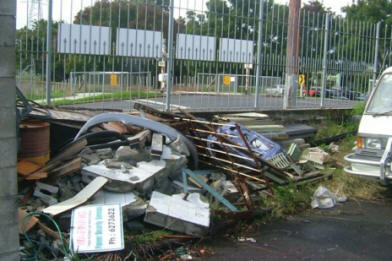How will you light up those dark corners? How will you highlight your favourite paintings? How will you see what you're doing in the kitchen? Good lighting is essential if you're to make the most of your interiors and it's the first thing you should think about when doing up a room.
A good electrician has all sorts of lighting at his disposal to install in your home. Gone are the days when a single hanging pendant light was the only light source, with maybe a table lamp for reading and writing. Electricians now talk about ambient, feature and task lighting - and in one room you can have all three!
Ambient lighting is general lighting that provides brightness. In some rooms it's useful to get your electrician to put this on a dimmer switch. For instance in living and dining rooms, where you may want to create the right ambience for romance or entertaining. It can also be really useful in bedrooms - particularly children's bedrooms where you may want to check on kids in the middle of the night without startling them awake! And in the bathroom it can help create serenity after a stressful day - especially if accompanied by a candle or two.
Feature lighting highlights special features that you want people to notice. Maybe a special painting or an attractive piece of furniture. It can also look great on shelving or in alcoves where it will guide people towards interesting features.
Task lighting is very practical. It ensures you can properly see what you're doing. For example cooking in the kitchen, reading a book in bed or applying make-up in front of a mirror. It provides strong light in a specific place and is essential for getting things done without straining your eyes.
Electricians can answer your lighting needs with several light sources. Downlights are recessed into the ceiling or attached to the wall. If they are going to be recessed you will need to check that the cavity between the ceiling and the floor above is wide enough to accommodate the lighting fixture. Downlights can give narrow or wide beams of light, the latter being a good solution for general lighting.
Uplights are attached to the wall and throw light up to the ceiling, which is then reflected back into the room. These lights can increase the feeling of space and height in a room, as long as the ceiling is white or very pale.
Wall washers cast light up and down a wall, again reflecting the light into the room but also creating an attractive light feature on the wall, especially if the beams are narrow. They are particularly effective at highlighting interesting wall textures, for instance polished concrete or exposed brick.
Decorative lights can be a fantastic feature and work particularly well if paired with other lighting so that the decorative light does not have to do all the work of lighting an area. It can then be appreciated as a decoration rather than merely a light source. These include pendant lights, chandeliers and attractive table lights.
Before your electrician installs the light fitting you've picked, its worth considering the type of bulb it takes. Low-voltage bulbs work particularly well as discreet feature lighting. Fluorescent bulbs produce even, flat light and are good for uplights and wall washers. Clear tungsten bulbs with a bare filament will produce highly defined shadows whereas frosted bulbs provide softer, more diffuse light.
Also, discuss with him the controls. Apart from dimmers there are also controls which can include all the lights in a room on pre-set controls, programmed to different moods - very bright, very dimmed, some lights on and others off. This allows you to create the appropriate mood at the flick of just one switch rather than going round the room putting several lights on and off, which can be tedious.
Good lighting can transform a home. So make it a priority when you are redecorating - use it as the starting point and you can't go wrong.

